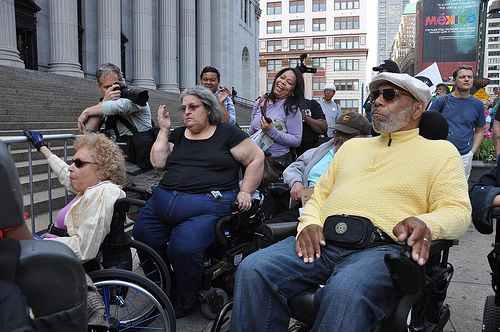Disability is far from a monolith. The folks fighting for inclusion, accessibility and basic human rights are as diverse as disability itself. No matter how you identify, there are resources on the Lynn Williams Activist Toolkit to help you organize today on International Day for Persons with Disabilities and every day thereafter to strive towards a world where barriers have dissolved.
The activist toolkit presents five of our best tools for creating accessible activism.
5. Rejecting institutionalization
The legacy of violence against people with disabilities lives on through Canada’s recent history of institutionalization. Folks deemed “unfit” due to impairment, poverty or mental illness were historically confined, sterilized or otherwise segregated in inhumane institutions. Though improved, institutions for people with disabilities are still open today, despite successful models of independent and community living.
4. Interrupting Oppressive Language workshop
Ableist language is unfortunately still so common it’s often overlooked. It’s only recently that mainstream media has recognized the problematic use of the r-word after many campaigns to end use of the term. This workshop covers how to confront and interrupt the use of any oppressive language and challenge this violence.
3. Including Disability in Union Work guide
This guide is for labour and disability activists alike, addressing disability theory as well as practical inclusion in union organizing. Disabled workers are valuable employees who offer a different perspective to unions — this guide helps them to be heard while teaching able-bodied activists to listen.
2. Surviving the Psychiatric Complex resource list
Mental disabilities are often invisible and highly stigmatized, even within disability rights communities. This round-up of resources covers everything from the history of madness to starting a mad pride collective.
1. Actively Addressing Accessibility guide
It’s up to able-bodied activists to create an environment of inclusion and anti-ableism where folks with disabilities feel safe participating. The only way to create this invaluable diversity in a movement is to be actively organizing to eliminate barriers. This tool shows facilitators and event organizers alike how to create safer and more inclusive spaces.
These are just a handful of tools organizers can use to break barriers. What tools would you like to see? Let us know in the comments!



